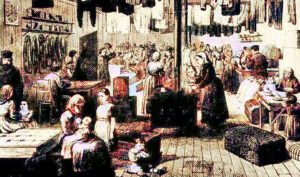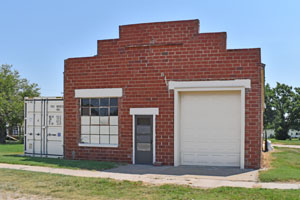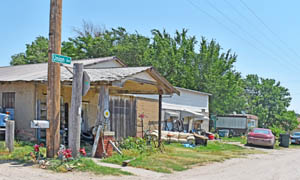Susank, Kansas, is a very small town in Barton County. It is also an “extinct town,” as it no longer has a post office. As of the 2020 census, its population was 31, and its total area was 0.10 square miles, all of it land.
Some of the first settlers in the area were Volga German families. The Volga Germans comprised a community of Germans who migrated to Russia in the 18th and 19th centuries. Primarily living along the fertile banks of the Volga River, they preserved their German language, customs, and traditions.
In 1862, President Abraham Lincoln signed the Homestead Act, which offered free land to individuals willing to cultivate and improve it. While America and Russia witnessed rapid population increases, land was available in the United States. By the early 1870s, rumors and advertisements had reached the Volga Germans. In 1873, leaders from various Volga colonies met to determine a course of action and sent a group of exploratory emissaries to assess the prospects in the United States. They returned with soil samples, advertisements, and positive accounts conveying the promising life awaited the Volga Germans in America.
The first Volga German settlement was established in Lincoln, Nebraska, and before long, thousands of people of Volga German descent had moved to Colorado, Kansas, and Nebraska.
A large group of Volga Germans arrived in Topeka in November 1875. Within a few months, hundreds more arrived in Kansas. In time, they settled in the Susank area and Munjor, Pfeifer, Schoenchen, Albert, Alexander, Antonino, Bison, Bunker Hill, Concordia, and others.
The St. John Lutheran Church was organized three miles north of Susank on October 20, 1906. Services were first given in German.
In 1919, the Atchison, Topeka & Santa Fe Railroad extended a rail line from Holyrood through Susank to Galatia.
A post office was established on June 24, 1921. The city was named for Ed Susank, a county official.
St. John Church began English-language services in 1943.
In 1955, St. John Church merged with Emmaus Lutheran Church in Hoisington to form Concordia Lutheran Church (in Hoisington). The final service at St. John Lutheran Church north of Susank was held on November 7, 1955.
At some point, the Atchison, Topeka & Santa Fe Railroad line running east-west through Galatia was discontinued.

Old gas station in Susank, Kansas, courtesy of Google Maps.
Susank’s population declined through the years, and its post office closed on August 1, 1991.
Today, the community is served by Hoisington’s USD 431 public school district.
Susank still has several vacant business buildings, including an old gas station, school, and post office.
©Kathy Alexander/Legends of Kansas, October 2024.
Also See:
Extinct Towns of Barton County
Sources:
Kansas Historical Society
Volga German History
Volga German Institute
Volga Germans
Wikipedia





